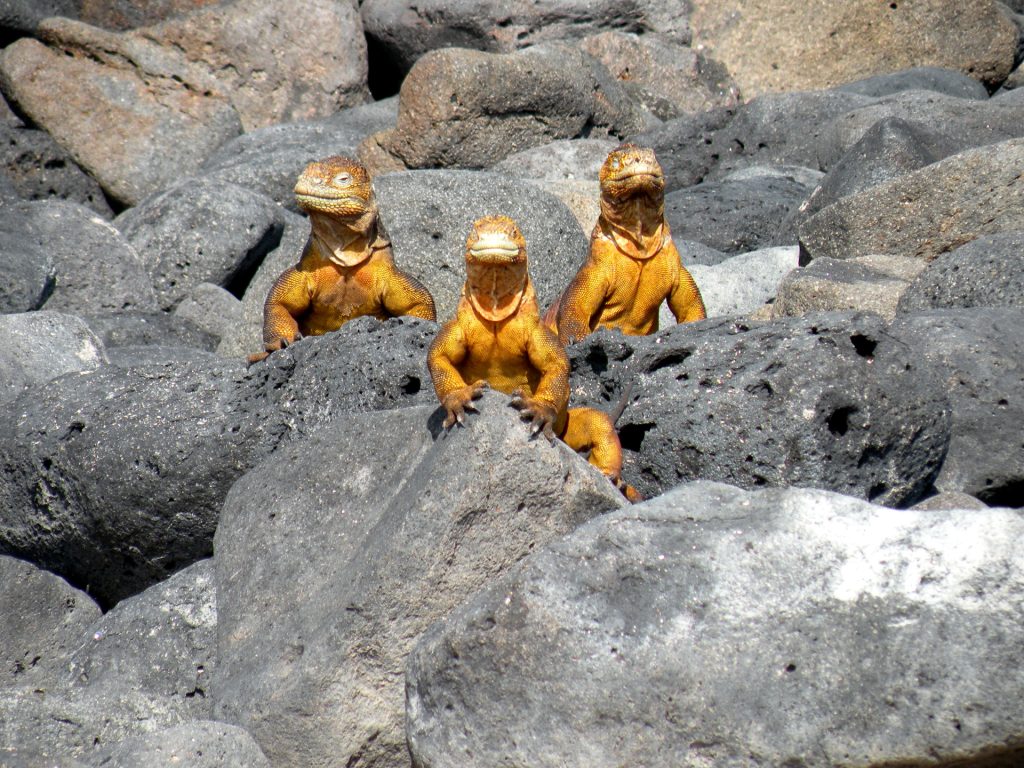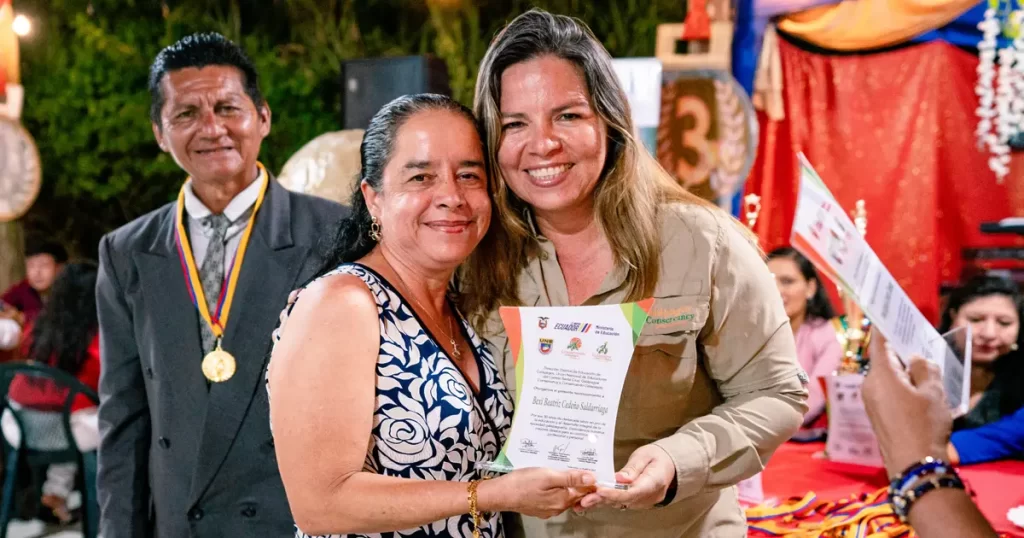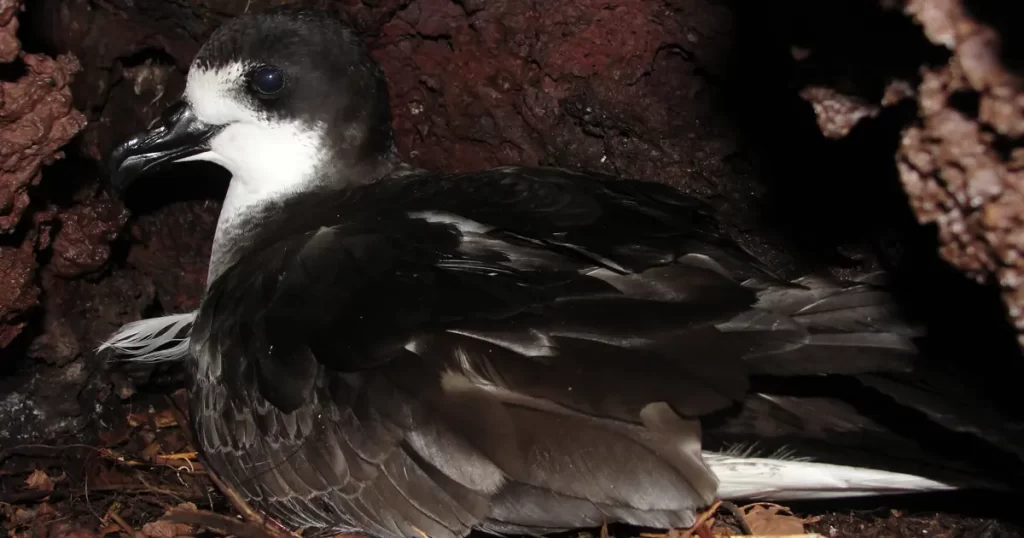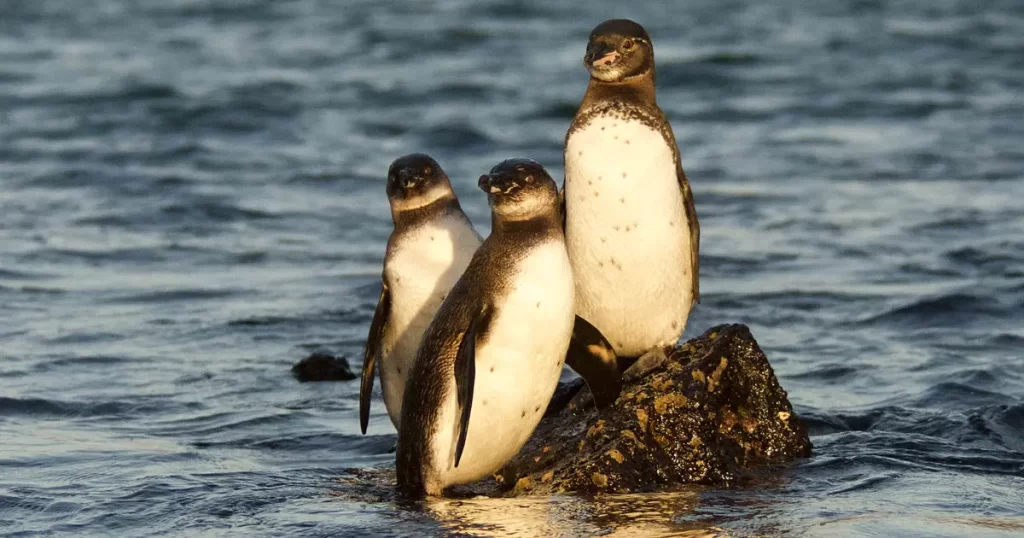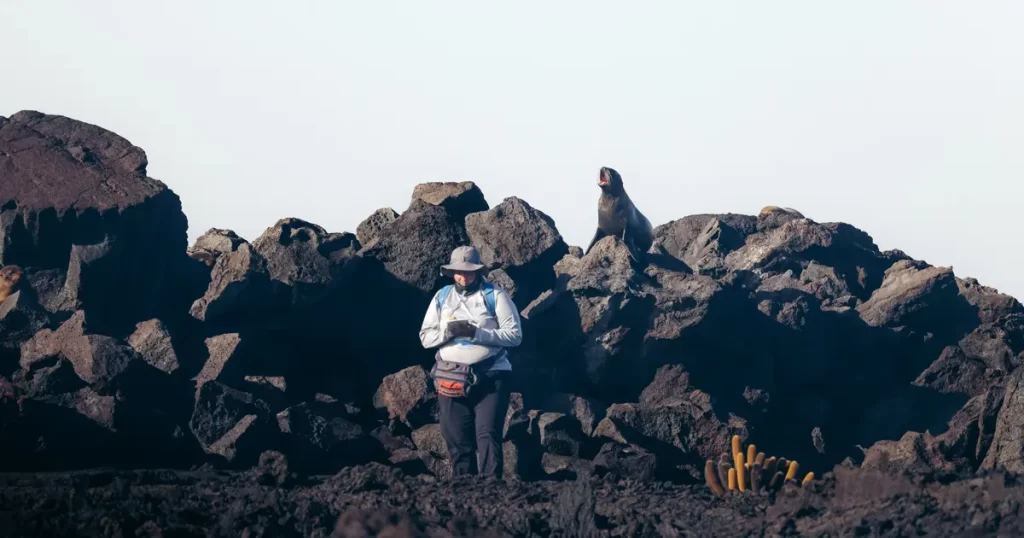Yellow Land Iguanas: Three Island Populations Whose Futures Depend On One Another
- September 11, 2023
- 6:12 pm
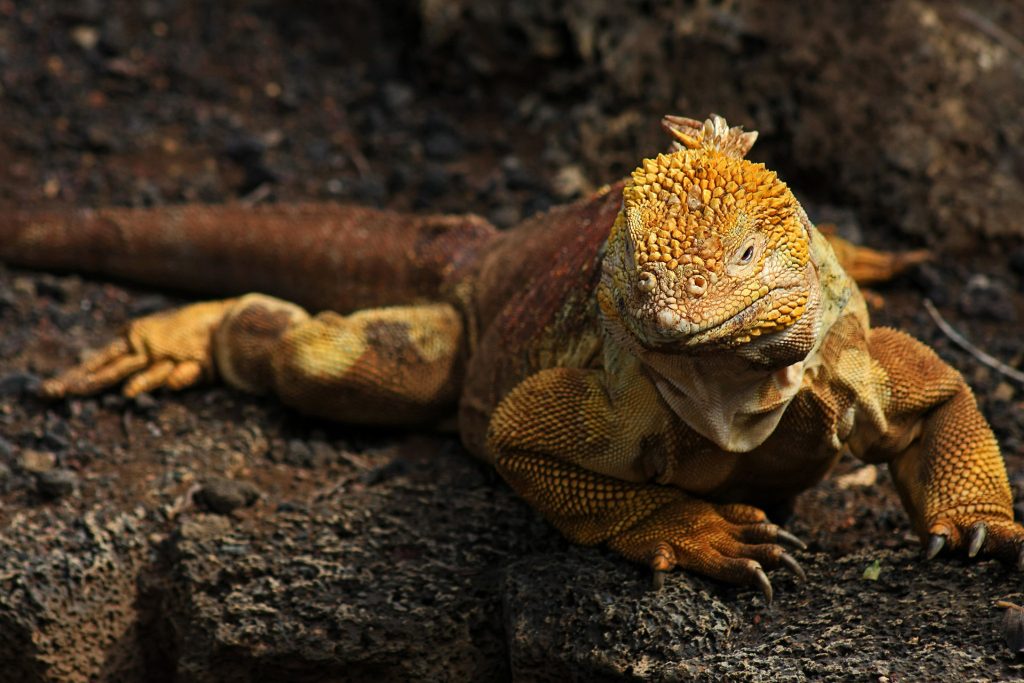
Yellow iguanas are much-loved denizens of the dry lowlands of Galápagos. Once widespread across much of the archipelago, they are now limited to just a few areas and among them are three islands — Baltra, North Seymour, and Santiago — whose past and future fates are intimately intertwined in ways few people know.
Here’s the story
In 2022, Galápagos Conservancy staff, along with Gálapagos National Park guards, undertook an island-wide survey of iguanas on Baltra, where land iguanas went extinct but have since been reintroduced, and on North Seymour, where the species has been introduced but was never native. These iguanas were introduced to North Seymour on a lark from Baltra by U.S. military personnel around the time of World War II. The population now consists of nearly 4,000 individuals — a huge population for such a tiny island. The iguanas are now so abundant they are damaging the island’s ecosystem, which is not adapted to their presence.
Remarkably, not long after the war, the Baltra population that was the source of the North Seymour iguanas went extinct, largely due to predation by introduced cats. Some 50 years later, cats were removed from Baltra, and iguanas were reintroduced to this island back from North Seymour.
A recent island-wide survey shows that Baltra’s iguana population has quickly rebounded, with nearly 2,500 of these fascinating reptiles now on the prowl. While this recovery is great news for yellow iguanas, it also portends increasing conflicts with human activities on Baltra — particularly at the airport, where the iguanas have taken to basking on the runways.
So where does the third island, Santiago, fit into this story? This island once had a huge population of yellow iguanas. In fact, Darwin, on his visit to Santiago, commented that there were so many burrows of these iguanas it was difficult to find a place to pitch a tent. Here, too, the species was entirely eliminated after the arrival of invasive species that depredated iguanas, their young, and their eggs.
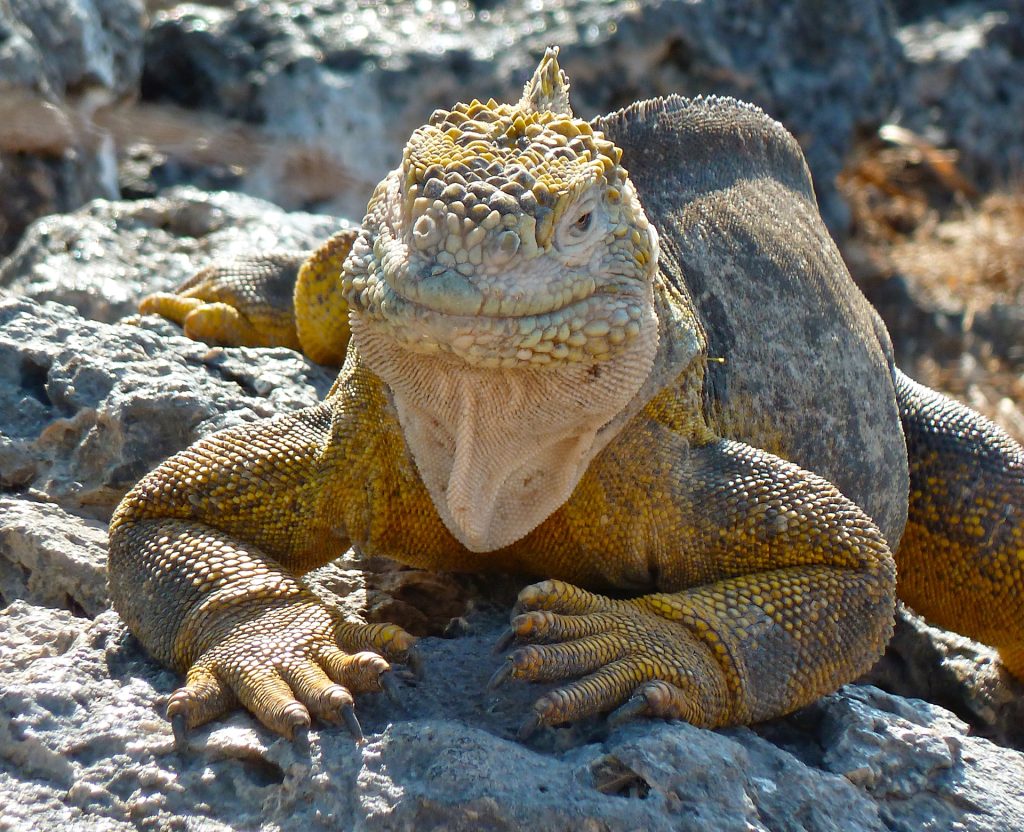
Today, after concerted efforts, those threats have been removed from the island, and Santiago now offers an ideal iguana habitat. Soon, it could become the focus for translocation of all land iguanas from North Seymour.
In 2023, Galápagos Conservancy will be mounting an important expedition to Santiago to assess how to fully repopulate the island once again with yellow iguanas. This would allow for the rapid rebuilding of the population on Santiago while also removing all land iguanas from North Seymour, where they do not belong. Baltra, meanwhile, would continue to recover on its own.
This tale of three islands and their iguanas shows just how necessarily intertwined efforts are to restore endangered species across Galápagos, as scientists integrate the historical quirks of each island while adapting to new opportunities as they arise to rebuild populations.
